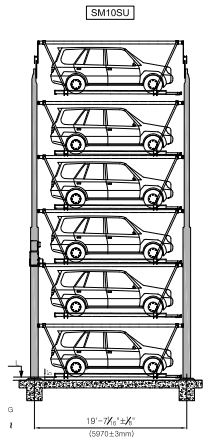SJBombero
Structural
- Dec 1, 2014
- 174
I have been asked to provide a peer review of the attached structure which is a carousel to store vehicles. My feeling is that even though the cars are free to swing in one direction, the mass of those vehicles must still be included in the seismic mass. I imagine that with some dynamic non-linear analysis one might be able to justify a lesser contribution from the swinging mass. However that is beyond the scope of this project at this point. The EOR has neglected the seismic mass of the vehicles per the ASCE 12.7.2 provision for public garages which I believe is incorrect. Has anyone looked more closely at this type of structure that I could reference to support my position?




